By Louise Irvine
The dragon is unique in the world of fantastic animals, as no other imaginary creature has been recorded in such a diverse variety. As you will discover in the Dragon Quest at WMODA, these serpentine creatures can be found with two legs, four legs or no legs and with or without wings. Join dragonologists in the museum and see how ceramic artists have portrayed auspicious and ferocious dragons over the centuries. Here be Dragons!
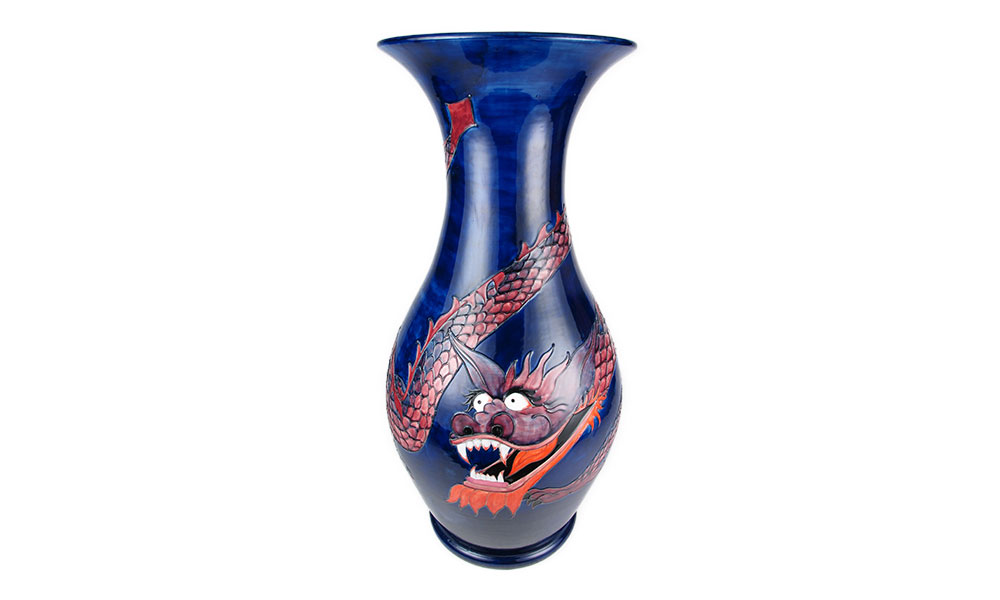
Moorcroft Dragon Vase
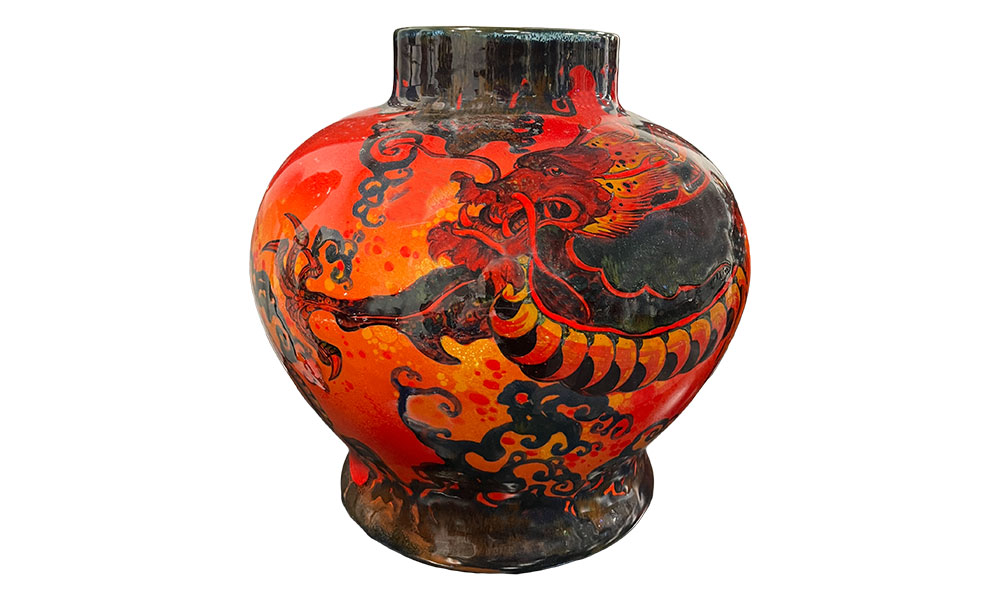
Royal Doulton Sung Dragon Vase
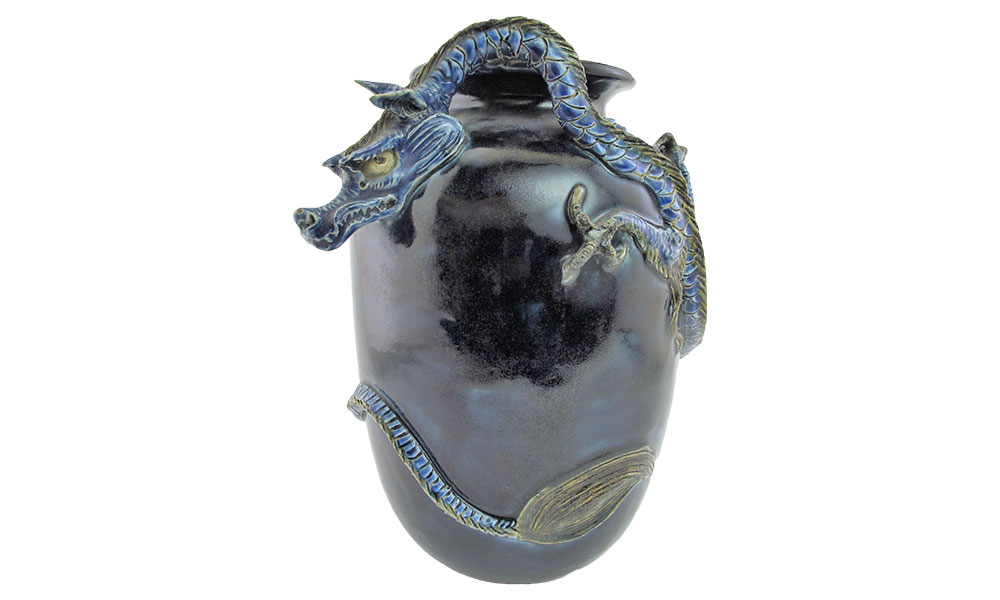
Doulton Lambeth Dragon Vase
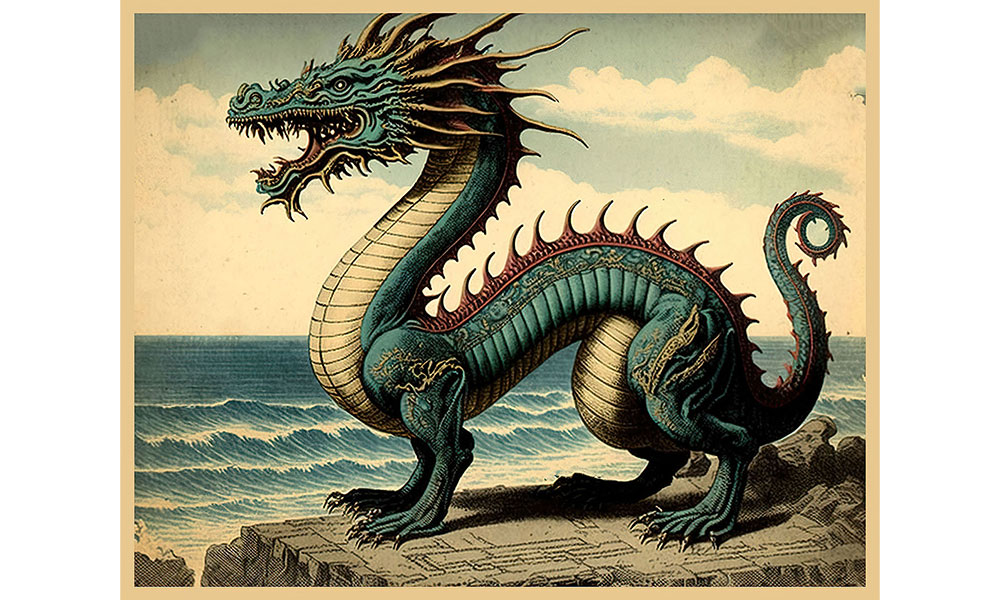
Chinese Blue Dragon
Chinese Dragons
The Chinese believed in many kinds of dragons living deep underwater or in cloudy skies. Most are auspicious and bring good luck, but some are fearsome and create thunderstorms and floods. They combine attributes of nine other creatures, including the horns of a deer, the head of a crocodile, the body of a serpent and the feet of a tiger with eagle claws. Their colors are symbolic of their great powers, which were often associated with the Chinese emperors who were believed to be descended from dragons. The dragon is the fifth sign in the Chinese zodiac, and the Year of the Dragon is seen as a year of good fortune, signifying strength, health and power.
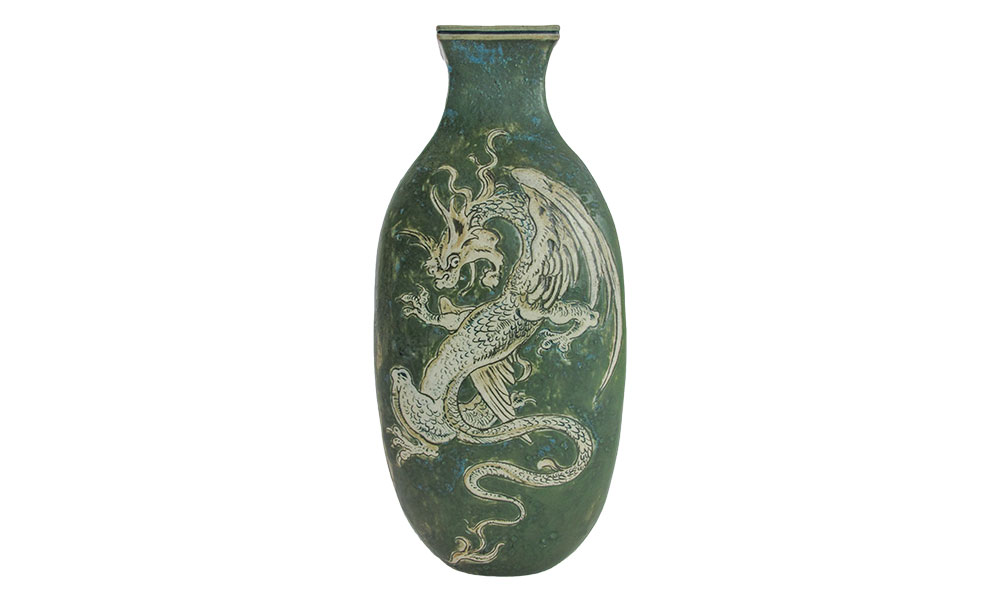
Martin Brothers Dragon Vase
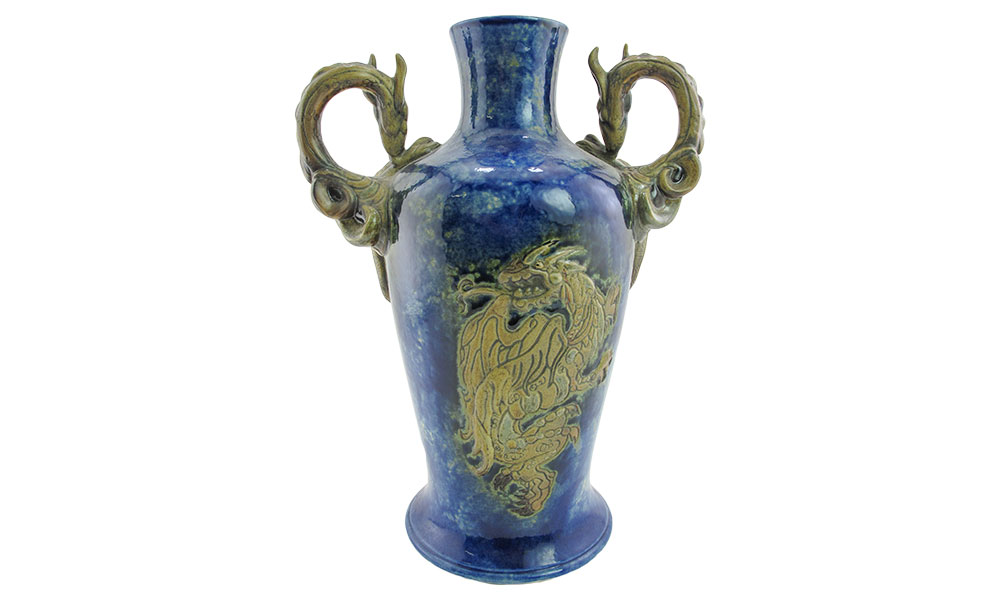
Cobridge Dragon Vase by A. Hull
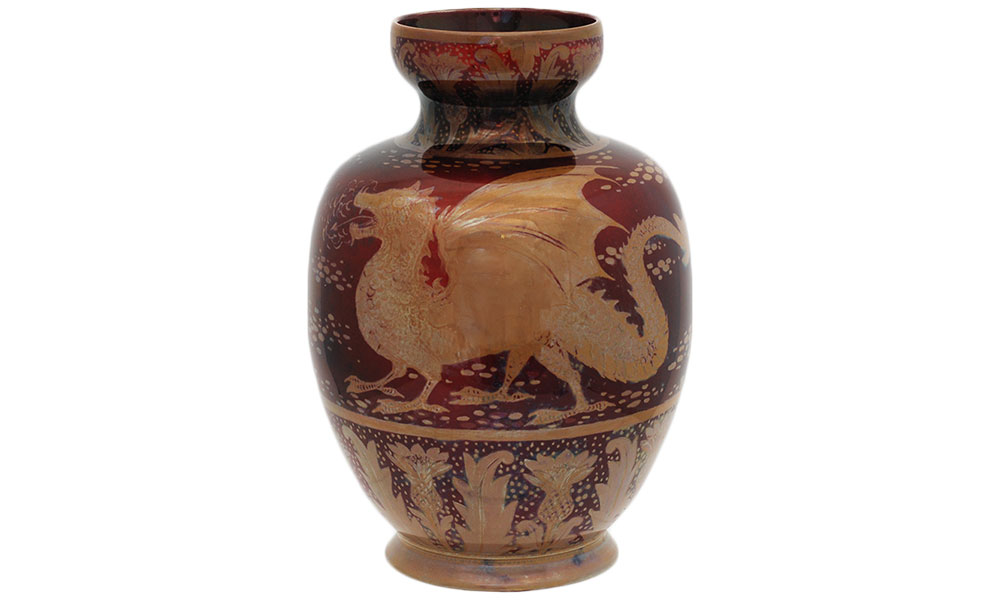
Ruby Luster Vase by E. Wilkes
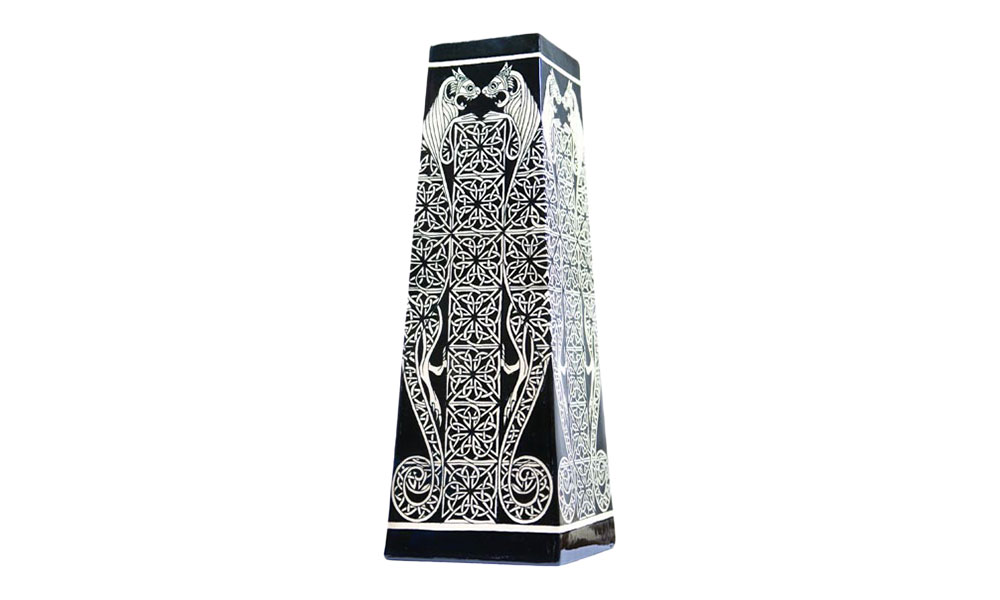
Celtic Dragon Vase by H. Warr

Dragons by A. Seder
Western Dragons
Dragons in the West are mostly dangerous, terrifying creatures, symbolizing evil and destruction. In legends and folklore, they lurked in lairs or caves in the mountains. The Celts believed that dragons possessed great knowledge and healing powers. However, in medieval Europe, they were portrayed as dangerous beasts to be slain by heroic knights. Dragons play a major part in heraldry representing courage and ferocity. J.R.R. Tolkien, the author of the Middle-earth stories, gave us flights of greedy, cunning and malicious fire-breathing dragons who share a love of gold and treasure. Most Western dragons look like giant carnivorous dinosaurs with wings and claws, but there are many variations, as can be seen at WMODA.
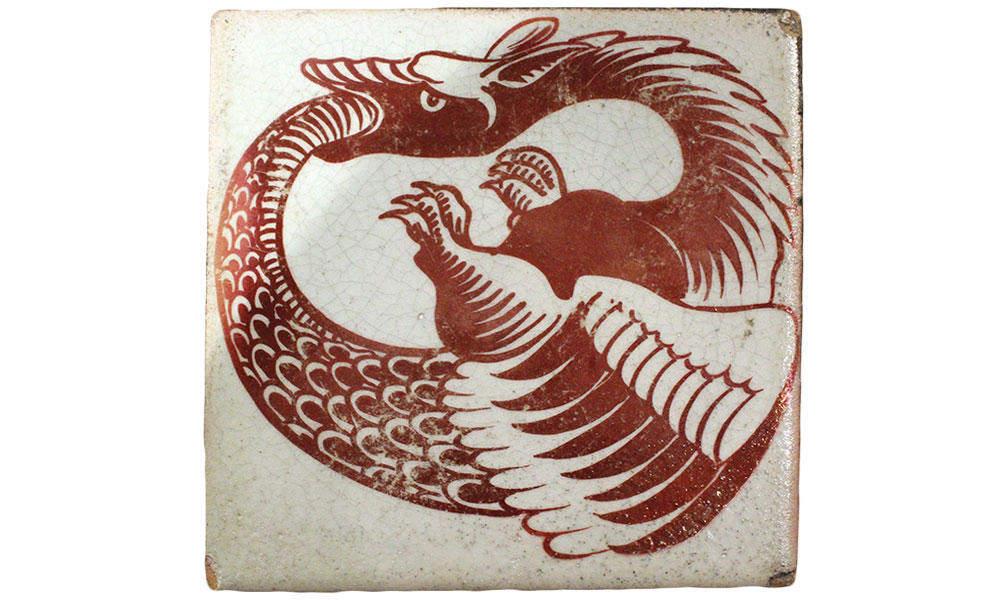
Ouroborous Tile by W. De Morgan
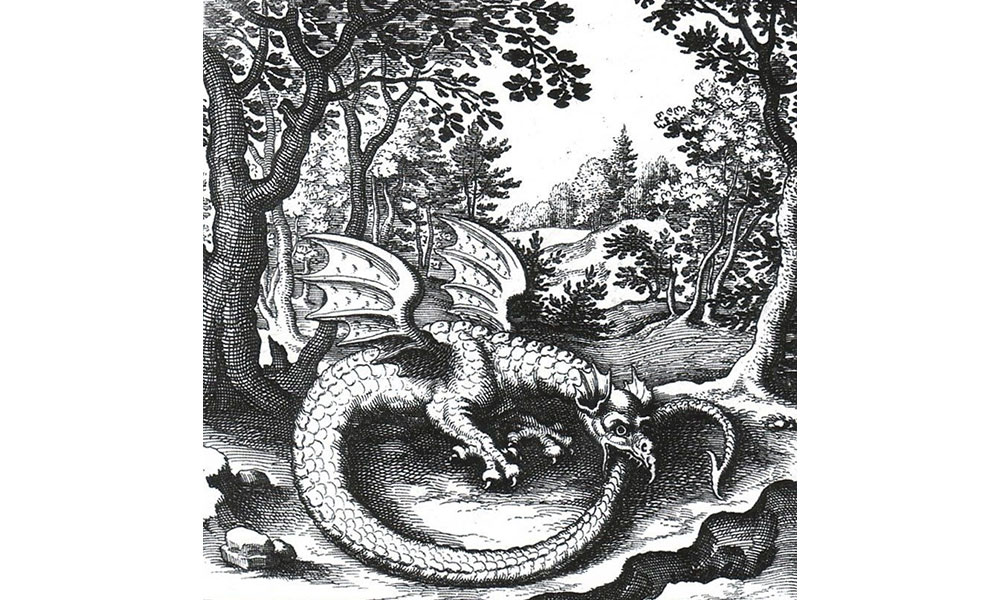
Ouroboros by L. Jennis 1625
Ouroborous
The ancient ouroboros symbol shows a snake or a dragon devouring its tail. The circle or spiral that they form represents eternity, the cycle of life, death and rebirth. Some cultures believed that snakes were immortal because they appeared to be reincarnated when they shed their skins. The Victorian artist-potter William De Morgan depicted the eternal cycle of destruction and recreation on a ruby-luster tile.
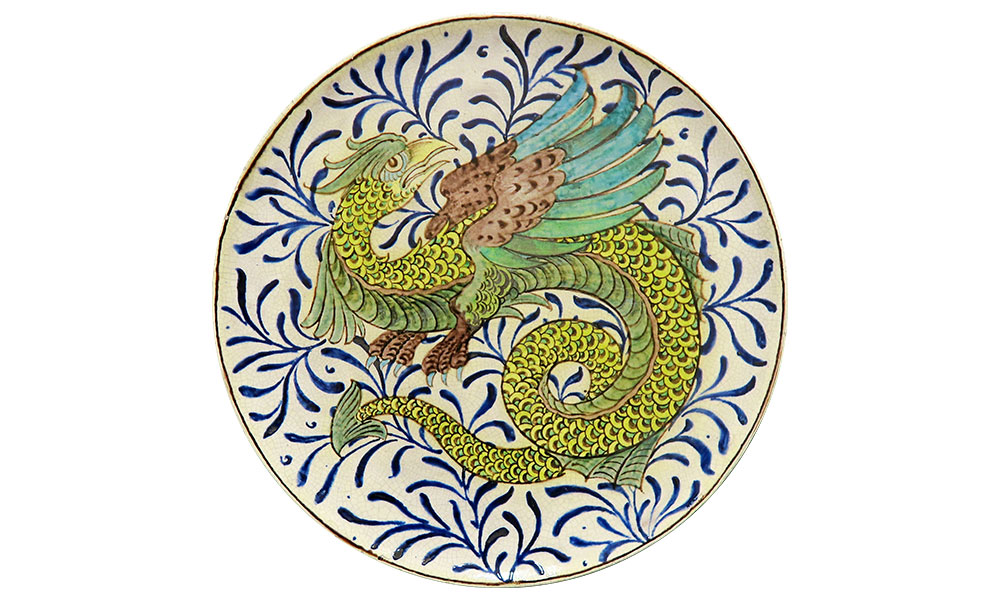
Cockatrice Plaque L & Co
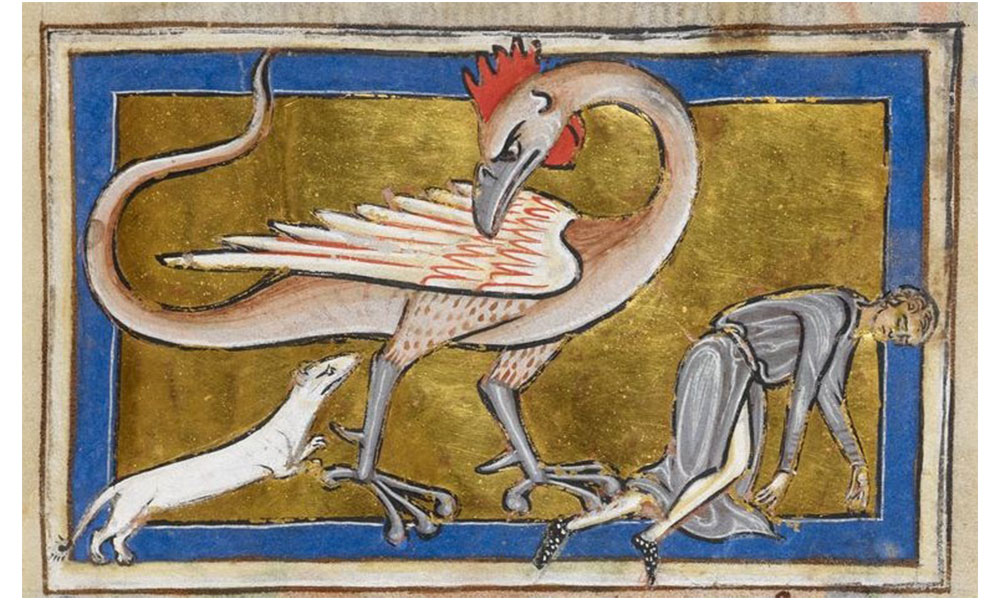
Cockatrice Bestiary British Library c.1200
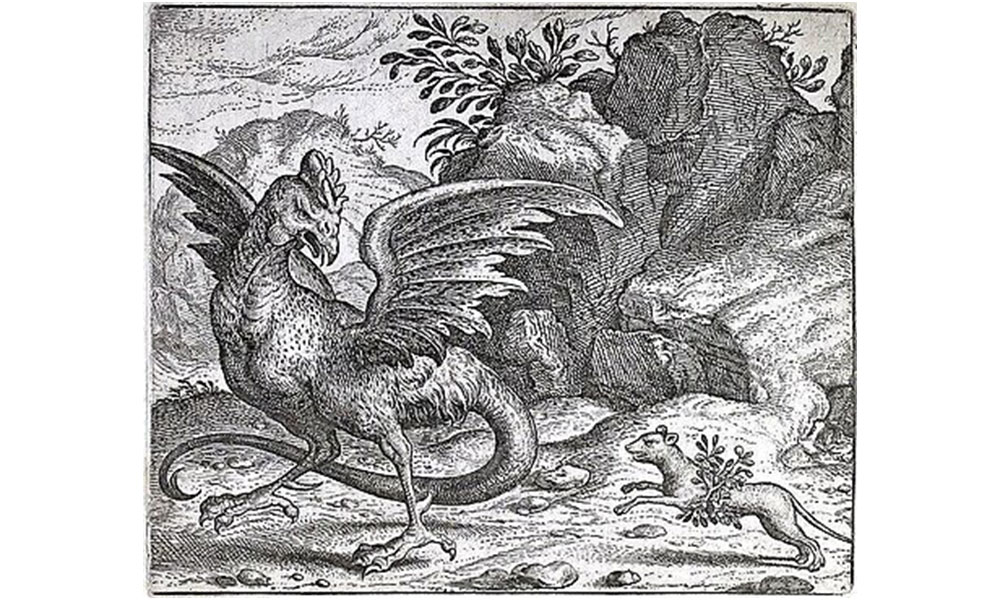
Cockatrice and Weasel
Cockatrice & Basilisk
Ancient legends claim that the basilisk has the power to destroy all life through its deadly piercing gaze. It was inspired by the Egyptian cobra and was alleged to have been hatched by a cockerel from a serpent’s egg. Its deadly capabilities included breathing fire. The cockatrice with a cockerel’s head became synonymous with the basilisk. The stench of a weasel was one of the few ways to destroy the creature. It could also be killed by looking at its own reflection or by the crowing of a rooster carried by wary travelers.
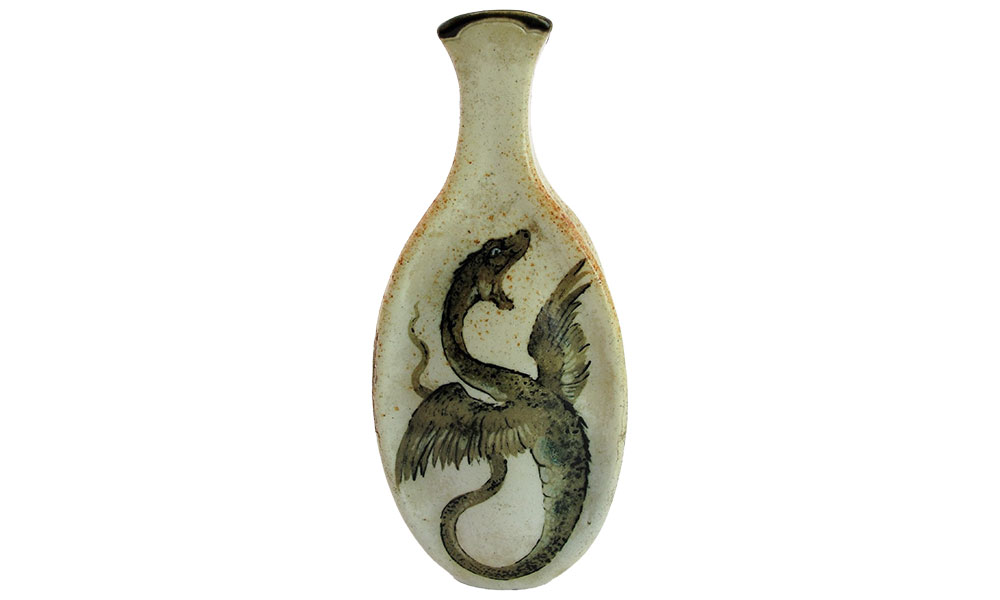
Amphipetre Vase E. Martin
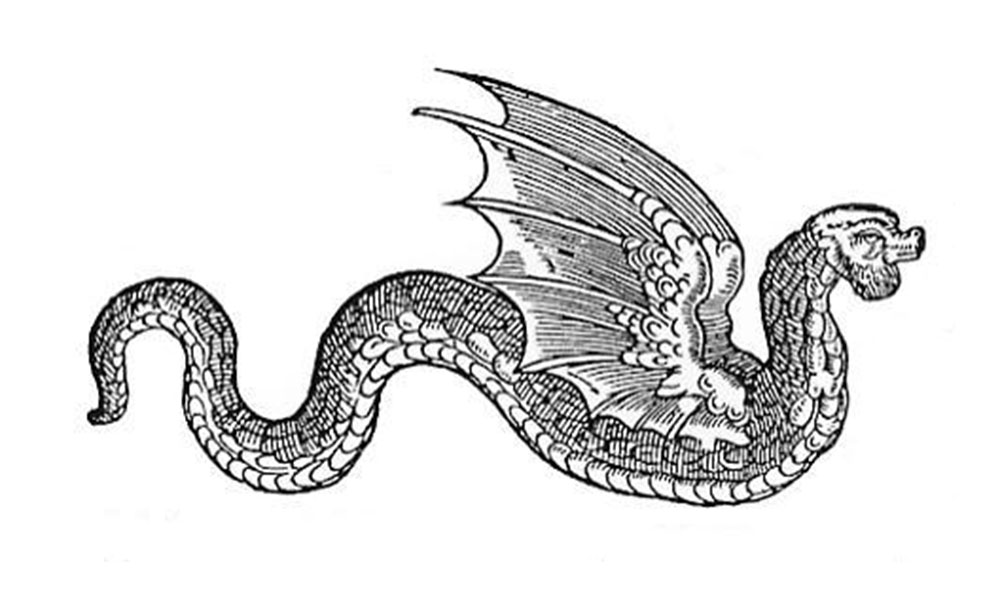
Amphiptere E. Topsell 1608
Amphiptere
This two-winged snake is found in European heraldry and is said to have a feathered serpentine body with a spiked tail and bat or bird-like wings. The Martin Brothers represented the strange creature on a stoneware vase in the 1890s.
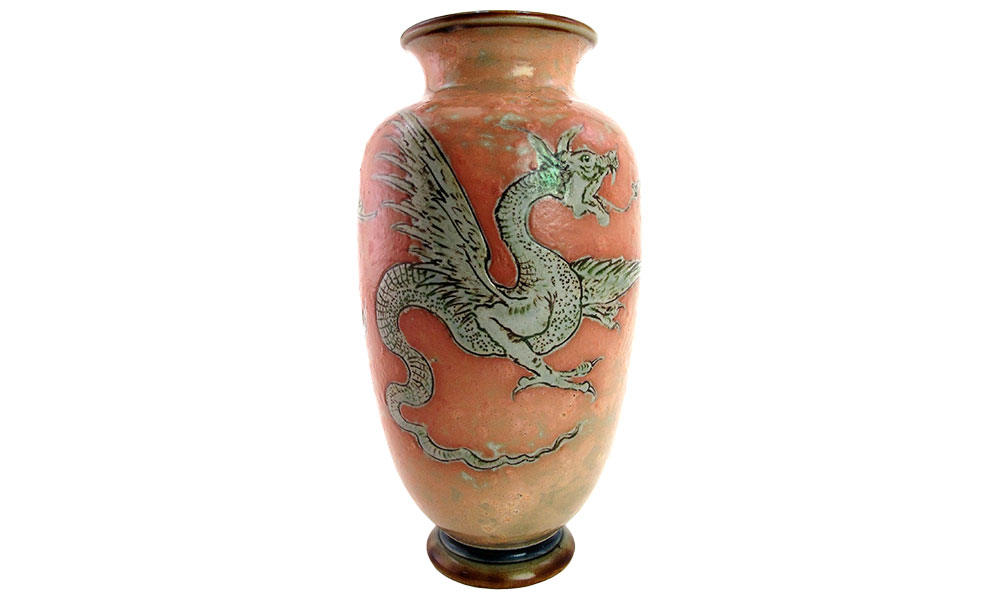
Martin Brothers Wyvern Vase
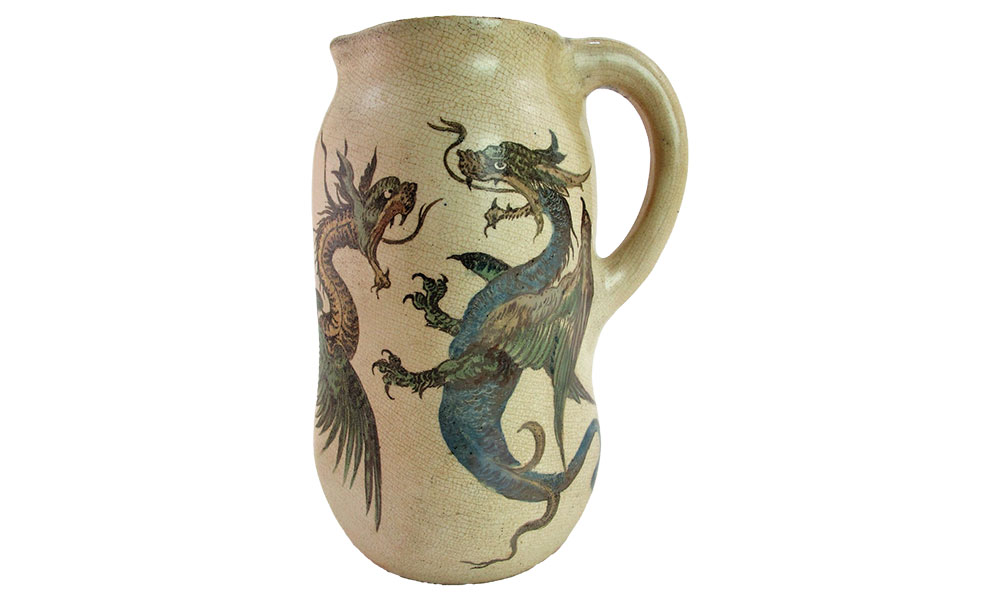
Martin Brothers Wyvern Jug
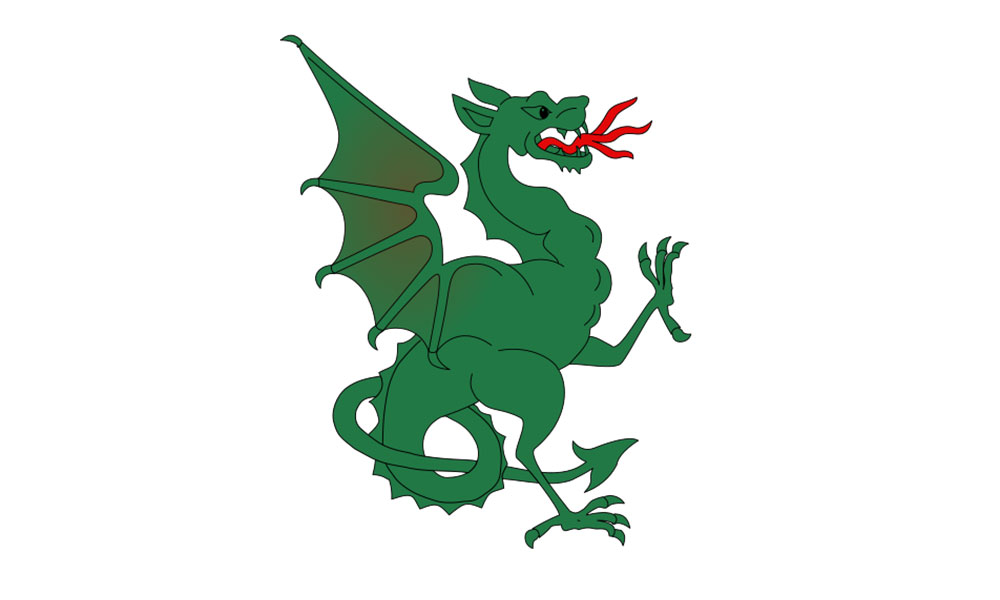
Heraldic Wyvern
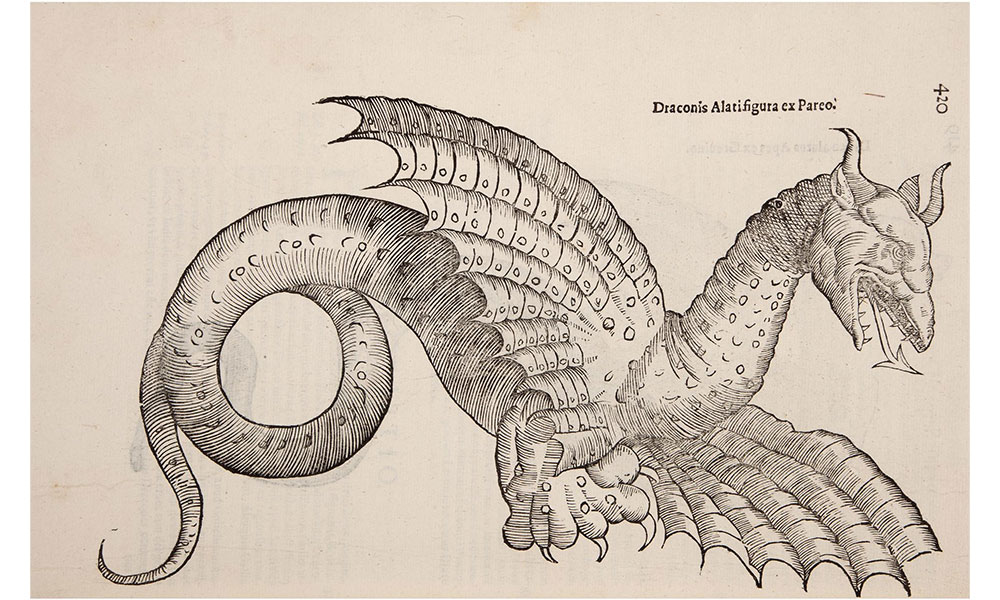
Wyvern Dragon U. Aldrovandi
Wyvern
The wyvern’s name is derived from the viper, a venomous snake, and its serpentine tail often ends in a poisonous arrow-like spike. The wyvern has a dragon’s head and a reptilian body with two legs and wings. The wyvern became an important heraldic symbol. It is also a popular mascot of universities and athletic teams in the UK and USA. The Wyvern appears on vases by the Martin Brothers.
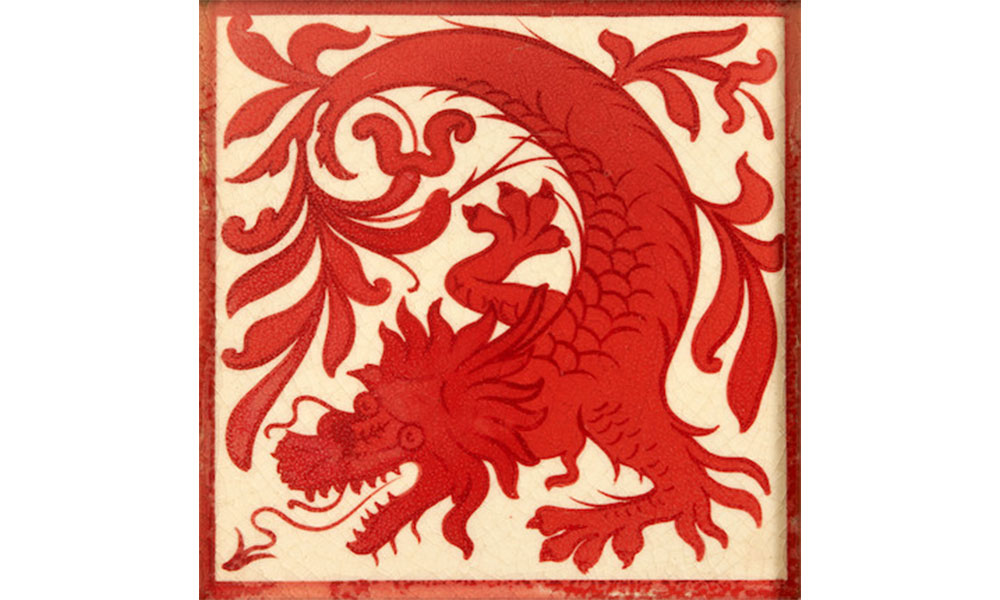
Craven Dunnill Lindworm Tile
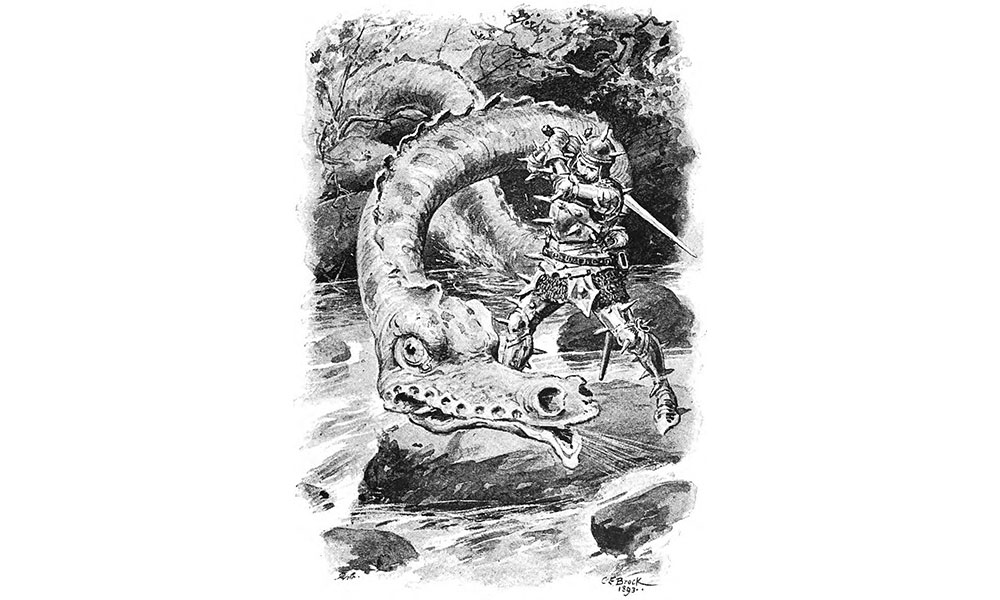
Lambton Worm by C. E. Brock 1890
Lindworm
Typically the lindworm, derived from an old German word for snake, has two legs and no wings. The Lambton Worm terrorized the northeast of England in medieval times and was killed by a brave knight returning from the Crusades. The story inspired Lewis Carroll’s terrifying Jabberwock in Alice’s Adventures in Wonderland which was portrayed by Mark Marshall for Doulton. The Craven Dunnill tile factory produced a ruby luster tile depicting a lindworm which was attributed to the famous designer Lewis Foreman Day.
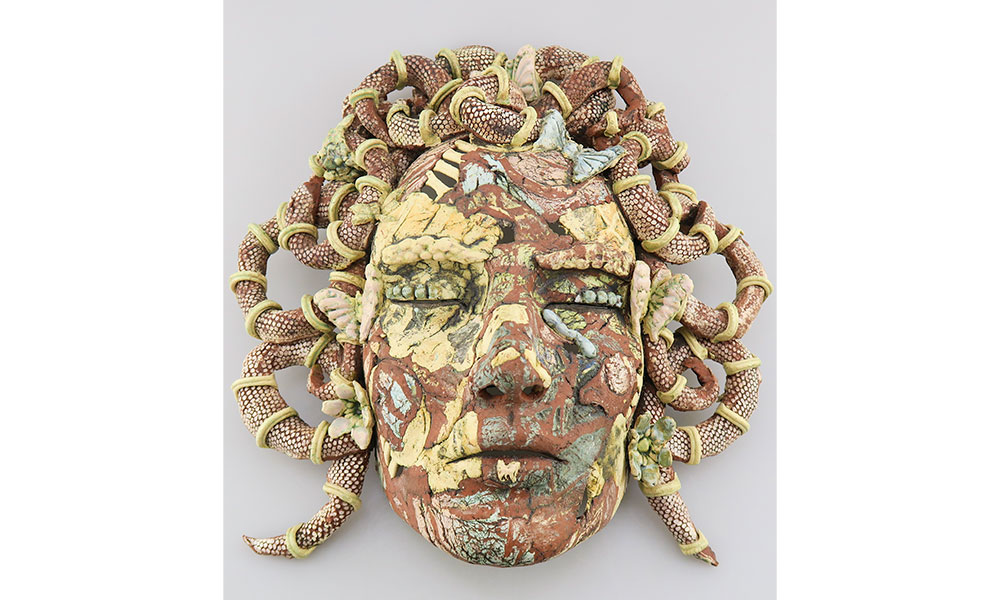
Medusa by H. Nottage
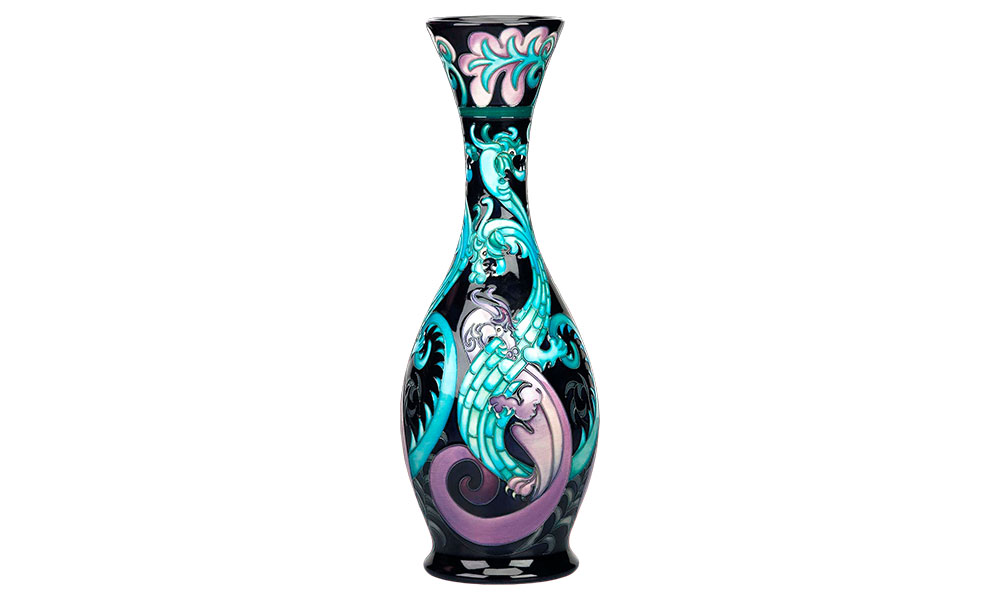
Moorcroft Amphisbaena Vase by K. Goodwin
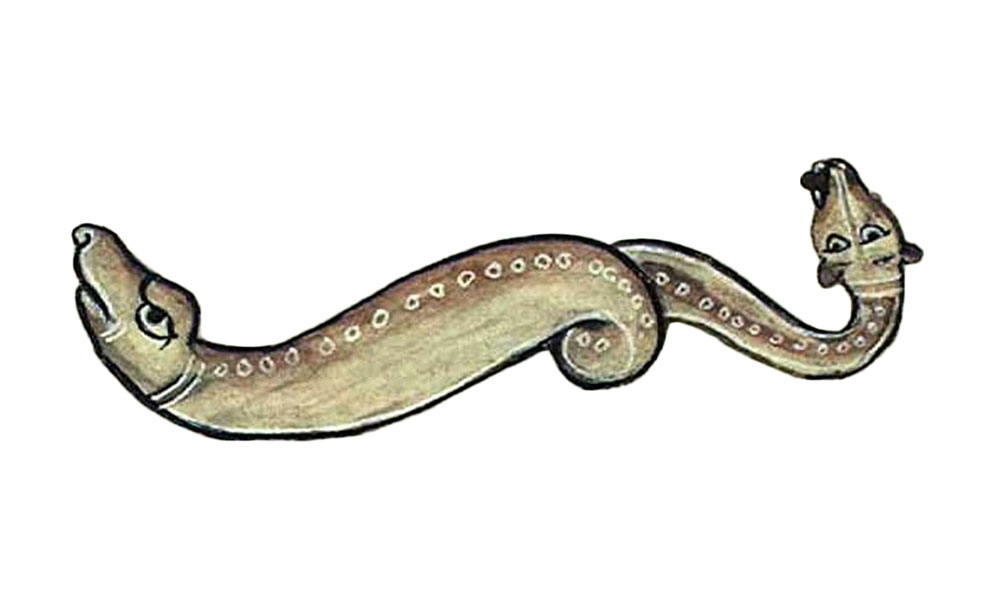
Amphisbaena Medieval Bestiary
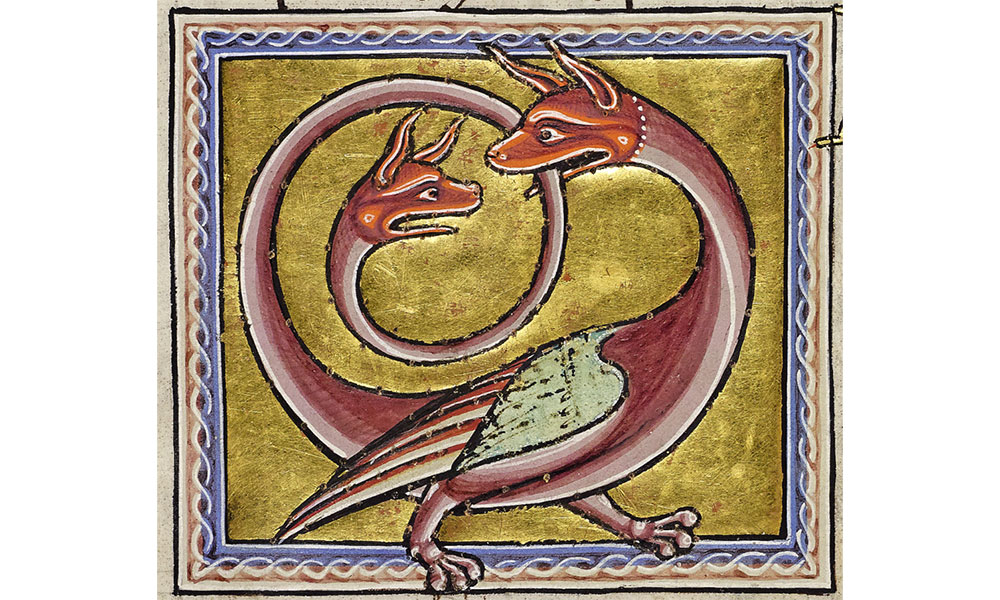
Amphisbaena Aberdeen Bestiary
Amphisbaena
This serpentine creature has a head at each end, and its name comes from the Greek meaning “going both ways.” The amphisbaena sprang from the blood that dripped from the monstrous Medusa’s head after she was slain by the hero Perseus. It fed on corpses left behind in the desert. The Amphisbaena is depicted on a Moorcroft vase designed by Kerry Goodwin. Medusa was portrayed by Wedgwood on Jasper ware plaques and in a scary wall mask by Helen Nottage.
Contact the WMODA Museum Shop for more information about the Ardmore scarves.
Read more about dragons, snakes and other fantastic beasts at WMODA
Here Be Dragons | Wiener Museum
Year of the Dragon | Wiener Museum
Peacocks and Dragons | Wiener Museum
Jabberwock & Other Creatures by Mark V. Marshall | Wiener Museum
